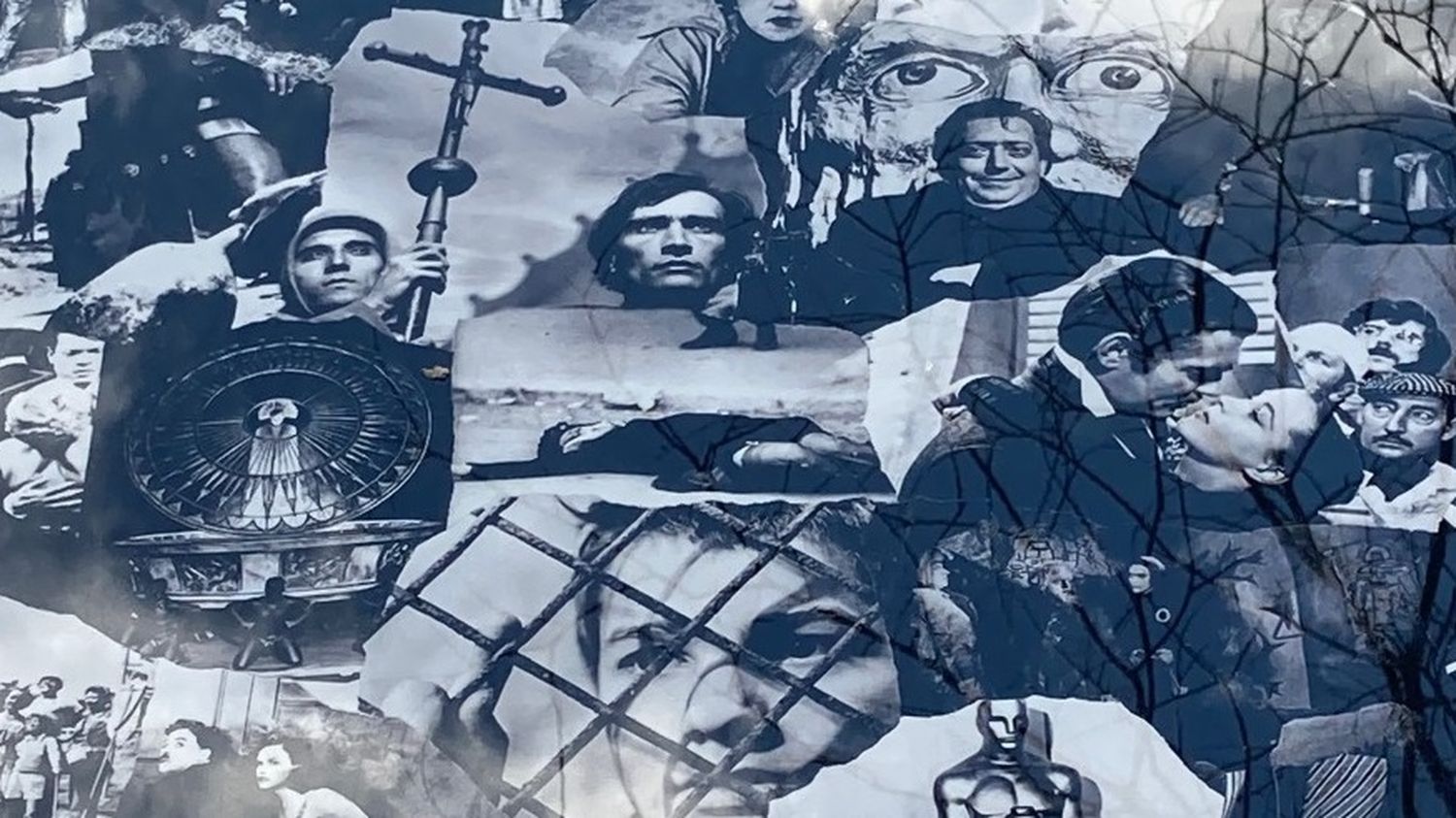Died in 1977, Henri Langlois has a very original grave in the Montparnasse cemetery in Paris. It has just been renovated following its degradation.
Too little known to the French, Henri Langlois is a “living god” of the world of cinema and moviegoers for having been the inventor and co-founder in 1936 of the Cinémathèque française – the first in the world -, with the director Georges Franju and the film historian Jean Mitry. She has made children all over the world since: what country does not have its own film library now?
Created by the “light architect” Patrick Rimoux, who is currently working on the new lighting of Notre-Dame de Paris, the latter has just inaugurated with the Langlois family his very special tomb, renovated by him. Patrick Rimoux’s favorite material: film stock. Funny place for a meeting in the Montparnasse cemetery, between monument and cinema. Patrick Rimoux tells us how he created and recreates this magnificent monument commemorating the prince of world cinematographic heritage.

Franceinfo Culture: How did you come to design Henri Langlois’ tomb?
Patrick Rimoux: When I was still a student at the Beaux-Arts, there was a competition offered to art schools in France and I was lucky enough to win it. I was in Ecuador at the time and a friend of mine, a film producer and distributor, told me about Langlois’ tomb. Langlois is film. I asked him for a roll of cinema film as a base material to make the model. It’s so beautiful, as the reels go to the pestle. That’s how I discovered this marvelous material that stayed with me and I’ve been making paintings based on film rolls ever since. I have 400 copies of film at home. The tomb, it had been designed at the time with an unfortunately hydrophilic glue, which liked water, it kept the water and denatured the acetate, the pellicular material, the silver film. So, after thirty years, the water damaged the images, it was actually quite beautiful. It was Jean-Patrick Langlois, brother of Henri, who has since died, and the director Jacques Richard, who had made this order. Today (for the inauguration of the renovation), there was Costa Gavras (president of the Cinémathèque), I was happy that he was there. But thirty-five years ago, Marcel Carmé or Samuel Fuller, Michel Lonsdale, all disappeared, and so many others, were there. I was a young student at the time and to meet them… it was myths for me.
When the Italian producer Michael Fantauzzi, who came to Paris, visited the tomb and discovered it in such a state, he decided to sponsor its restoration. Once the process started, we took all the photos that make up the slab, redid all the contrasts, so as to have a much better definition than originally. And we rebuilt it. Now we can put it in a pool, it won’t move.

How did you choose the photos of the slab?
I’m crazy about cinema and when I entered the competition, I researched Langlois and started looking for the films he liked. I only kept his favorite films, a few photos of him and relatives. There are the films of Franju, Hitchcock with whom he was very good friends, Fritz Lang who personally gave him props from his film Metropolis, returned to the Cinémathèque museum, because he was someone who above all wanted to share. At the time, when I started on the project, I knew who Langlois was, but today, he is completely forgotten. He saved so many films, without him there are so many that we would never have been able to see.
There is no religious symbol on the grave.
There is one, of course, with a photo of a film he loved and that I love, The Passion of Joan of Arc by Dreyer, with Falconetti in the role, but it’s a film still, not a religious symbol. The cross is however very visible, with a monk who carries it like a standard.
The stele is very curious, what does it mean?
When I was given the order, the Cinémathèque and the Musée du Cinéma were still at the Palais de Chaillot. For me, there were three important elements for the tomb: its shape, and since it was based in Chaillot, I made a model of the Palais de Chaillot, because that was its place. Second element: the assembly of all these photos of films that he adored and iconic. And then there is the third time, the most important. I used his life. We see him on the stele looking at a film in his hands, his gesture broken down over 24 images, like 24 frames per second, the rhythm of the film scrolling in the camera and at the projection. But I had to remove some images so that we could see the movement. It was a gesture he liked and did all the time, watching the film directly on the film in his hands. This material is so beautiful, it’s light.

Have you produced other works around the cinema?
I have some sad news right now. The Brussels town hall had commissioned me to do an urban work for the 100th anniversary of cinema. As there was a rue Joseph Plateau, inventor of the phenakistiscope (pre-cinema), I proposed to create the place Joseph Plateau with a sculpture, an arch with a montage of film photos. Today, the city wants to dismantle it. For me, it was especially important not to touch this work. I am therefore in the process of gathering people to oppose this dismantling and I am in a procedure. But hey, we’re at the moment for him to take it apart properly, put it down and I’m looking for a suitable place to display it. I contacted the Cinémathèque française, but they don’t have the space. The case is ongoing…
